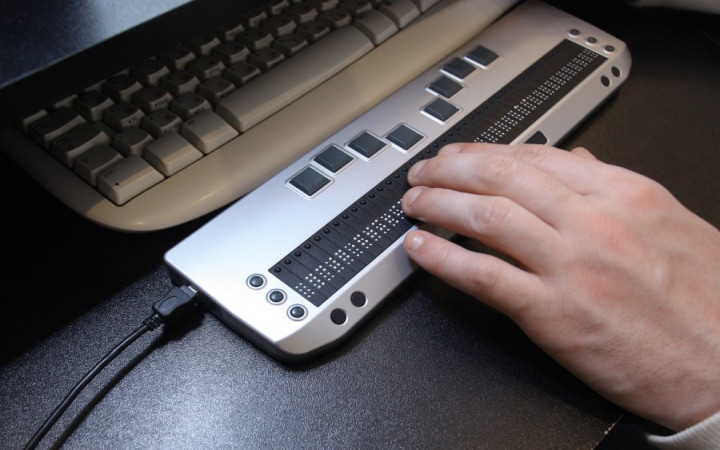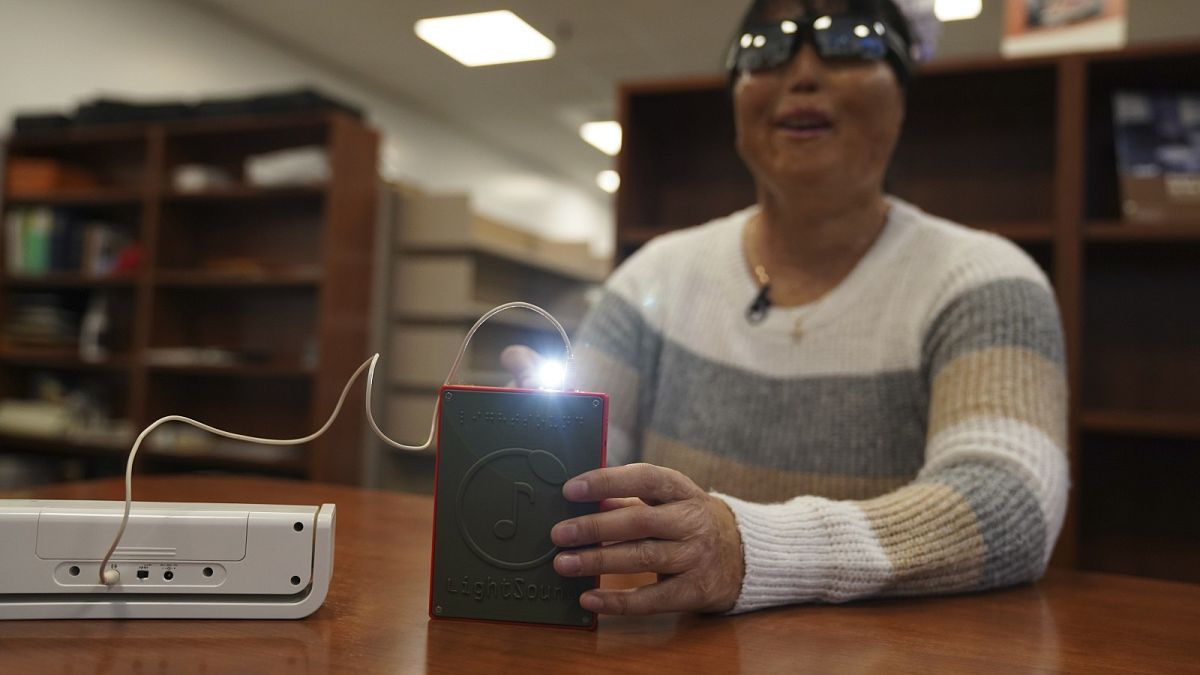Explore Smart Glasses for the Visually Impaired and Their Benefits
Explore Smart Glasses for the Visually Impaired and Their Benefits
Blog Article
Enhancing Lives With Advanced Assistive Instruments for the Blind
The assimilation of sophisticated assistive gadgets for the blind is changing exactly how people experience their environments and communicate with their communities. What does this advancement imply for the future of assistive innovation and its function in encouraging people?
Summary of Assistive Instruments
Assistive tools for the blind include a diverse variety of tools and modern technologies designed to improve self-reliance and improve the quality of life for individuals with visual impairments. These devices satisfy different requirements, from navigating and mobility to communication and everyday job administration.
One of the primary classifications of assistive devices consists of mobility help, such as white canes and guide canines, which aid individuals navigate their environments safely. Electronic travel help, geared up with sensors and audio responses, also play a considerable role in wheelchair enhancement.
In addition, gadgets that help with daily living activities, such as flexible kitchen area devices, Braille tags, and chatting watches, equip people to do tasks separately. Interaction help, consisting of screen viewers and Braille screens, promote access to details and make it possible for individuals to engage effectively with the digital globe.
Additionally, low-tech services like multiplying glasses and large-print materials stay vital for several users. Collectively, these assistive gadgets offer not only as functional tools but also as crucial enablers of freedom, fostering greater involvement in a globe that usually prioritizes sighted experiences. Their assimilation into life is necessary for advertising inclusivity and enhancing overall well-being for those with aesthetic problems.
Ingenious Technologies being used
Development in innovation has substantially transformed the landscape of devices readily available for individuals with visual problems. Among one of the most significant innovations are wise glasses incorporated with augmented reality, which offer real-time navigation assistance and object acknowledgment. These devices take advantage of advanced electronic cameras and expert system to supply auditory hints, enhancing the customer's spatial understanding and freedom.
Furthermore, mobile applications have become powerful sources, enabling individuals to determine currency, reviewed text aloud, and navigate strange settings via spoken instructions. Devices such as Braille display screens and refreshable Braille devices remain to develop, supplying seamless connection with mobile phones and computers, thereby boosting interaction and access to information.
Wearable modern technology, including smartwatches equipped with voice-activated features, better empowers customers by helping with quick accessibility to notifications and signals without requiring visual interaction. Responsive maps and 3D printing are also gaining traction, supplying substantial depictions of rooms that aid in orientation and flexibility training.
Jointly, these innovative technologies not just boost the day-to-days live of visually impaired individuals yet likewise foster greater self-reliance, inclusivity, and interaction with the wider community, consequently improving understandings of accessibility. (Smart glasses for the visually impaired)
Personal Stories of Empowerment
Empowerment frequently arises from personal experiences that highlight the transformative influence of technology on people with aesthetic impairments. Take, for example, the tale of Sarah, a young artist that regained her enthusiasm for paint with the usage of a smart walking cane geared up with barrier discovery. This heart shaped eyeglasses tool not just facilitated her wheelchair yet instilled a newly found confidence, enabling her to navigate public areas independently and seek her creative undertakings.

These narratives highlight the profound impacts that progressed assistive tools can have on day-to-day life. By making it possible for people to conquer obstacles, innovation promotes a feeling of freedom and self-worth. Such empowerment tales function as a testimony to the capacity of development, showing how the right tools can significantly improve quality of life and open doors to new opportunities for those with aesthetic impairments.
Benefits of Advanced Solutions
The integration of innovative technology right into assistive tools dramatically transforms day-to-day experiences for those impacted by vision loss. Wearable technology for low vision. Gadgets such as wise walking sticks equipped with sensors, navigation apps, and wearable innovation are developed to give real-time comments, improving spatial recognition and minimizing the risks linked with flexibility.
Furthermore, advanced assistive modern technologies cultivate social addition by facilitating communication and communication. Voice-activated tools and apps enable individuals to access information and engage with their surroundings individually, breaking obstacles that previously prevented their engagement in instructional, specialist, and social settings.
On top of that, the customization and flexibility of these remedies deal with the diverse requirements of individuals, thus enhancing their total high quality of life. Enhanced capability, such as things acknowledgment and text-to-speech capacities, empowers people with aesthetic problems to do tasks that they may have once found testing. Inevitably, progressed assistive modern technologies not just blue light filtering glasses enhance self-reliance and safety and security yet also promote self-respect and self-respect, enabling users to lead fulfilling lives.
Future Patterns in Assistive Tech
As modern technology continues to progress, the landscape of assistive tools for the blind is positioned for remarkable innovations that will certainly additionally boost accessibility and independence. Arising patterns in assistive technology show a change toward enhanced combination of expert system (AI) and artificial intelligence, enabling devices to adjust to private customer requires in real-time. These advancements are expected to promote more intuitive navigation systems that can recognize obstacles and give audio comments, significantly boosting exterior mobility.
Additionally, the development of wearable tech, such as wise glasses outfitted with augmented fact, will allow users to obtain contextual details concerning their environments, thereby enriching their spatial awareness. Improvements in haptic innovation assurance to develop responsive comments devices, allowing individuals to regard details through touch, improving learning and communication with their atmosphere.
Telecommunication advances are also leading the way for remote support remedies, where qualified professionals can supply assistance by means of video clip telephone calls, ensuring support is readily available. As these trends unravel, the future of assistive gadgets for the blind will most certainly cultivate greater autonomy, encouraging individuals to browse their globe with self-confidence and ease.

Final Thought
The integration of advanced assistive devices for the blind stands for a considerable development in fostering freedom and improving top quality of life. By using ingenious technologies, these tools encourage individuals to browse their environments with greater confidence and freedom. As the field remains to develop, ongoing r & d will likely produce even more innovative solutions, additionally transforming the lived experiences of people with visual problems and advertising a greater feeling of inclusion within culture.
The assimilation of innovative assistive tools for the blind is transforming how people experience their environments and connect with their neighborhoods. The assimilation of cutting-edge innovation into assistive gadgets significantly changes everyday experiences for those affected by vision loss.As innovation continues to progress, the landscape of assistive tools for the blind is positioned for amazing improvements that will certainly further enhance accessibility and self-reliance. Emerging patterns in assistive technology suggest a change towards boosted assimilation of fabricated intelligence (AI) and machine knowing, allowing tools to adjust to specific customer requires in real-time.The assimilation of advanced assistive devices for the blind stands for a substantial advancement in cultivating freedom and you can check here improving top quality of life.
Report this page